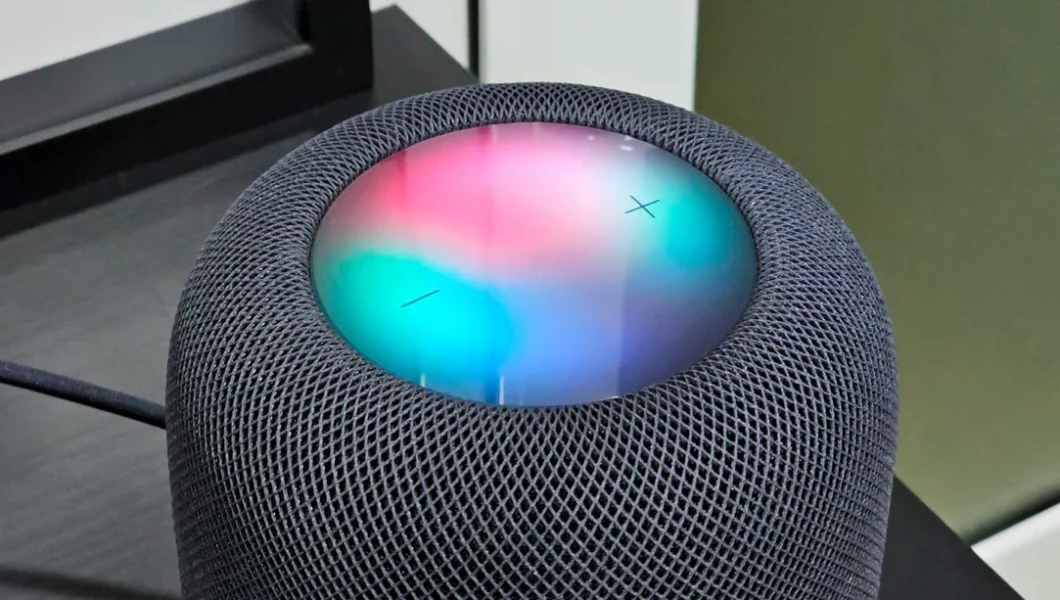Would a HomePod with a display really add that much to the user experience?
According to recent rumors, Apple is actively working on HomePod prototypes with a fully interactive display. More specifically, one of these prototypes identified as “B720” has the same form-factor as the HomePod 2, but with an LCD screen on top. But would this type of display on a HomePod really add much to the user experience?
The rumor suggests that Apple is exploring different ways of putting a display on the HomePod, with the B720 being a short-term solution to make the HomePod more appealing to customers. Nevertheless, the effectiveness of this display in enhancing the user experience has sparked debates among tech enthusiasts.
The Current HomePod Experience
The current HomePod experience, based on personal use cases where multiple HomePods are spread around the apartment, indicates the need for improvement. While the HomePod is lauded as a superior smart speaker alternative for Apple ecosystem enthusiasts, there remains ample room for enhancing the user experience.
The User’s Perspective
From a user’s standpoint, the desire for a display on the HomePod stems from the need to quickly access useful information. Users express a longing for a method to keep essential information readily visible, a requirement not completely fulfilled by the current HomePod configuration.
Furthermore, the reliance on siri as the primary interface has its limitations, with users voicing concerns about its efficacy and desiring improvements in music playback controls and interactive capabilities.
What the rumors Say
Apple‘s exploration of various display options for the HomePod, including the more ambitious project resembling a tablet attached to the speaker, highlights the company’s efforts to innovate and improve the product. While it may take time for the ambitious project to materialize, the B720 prototype is positioned as a stopgap measure to address immediate consumer demands.
An Evaluative Perspective
The concept of incorporating a display into the HomePod prompts an evaluative analysis of its potential impact on the user experience. Considering the constraints of the device’s size and Design, questions arise regarding the practicality and functionality of an integrated display.
Would a HomePod with a Display Change Anything?
The proposal of incorporating a display on the HomePod raises valid concerns about the limited field of view and the ensuing impact on user interaction. The constraints regarding visibility at a distance cast doubt on the functionality of the display for constant information display such as time and weather updates.
However, while the implementation of a display may present challenges, it also opens doors to new possibilities such as direct music selection and quick access to relevant information, albeit in a localized context.
A Deeper Exploration
The potential for a HomePod with a display to elevate the user experience is a subject of intense curiosity and speculation within the tech community. Enthusiasts further anticipate broader applications of a large display that can showcase song lyrics, videos, and seamlessly integrate with Home automation controls.
The User’s Perspective
The user’s viewpoint assumes significant importance in the evaluation of the proposed HomePod enhancement. Understanding their preferences and expectations is vital in determining the practical utility and desirability of a display-equipped HomePod.
Conclusion: Charting the Path Forward
The discussion surrounding the potential inclusion of a display in the HomePod underscores the significance of user-centric Innovation in the realm of smart speakers. While the B720 prototype signals a proactive attempt to address consumer demands, the ultimate success of such an endeavor hinges on meeting and exceeding user expectations.
As the evolution of the HomePod unfolds, with the repurposing of technology and fresh design considerations, the quest for an unparalleled user experience remains a driving force. Apple‘s advancements in this domain reflect the pursuit of innovation and the commitment to enhancing the consumer journey, thereby shaping the future of interactive smart devices.
Source: 9to5mac








No Comments